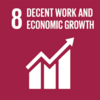Nick Sandbox: Difference between revisions
| Line 63: | Line 63: | ||
== Project Location & Dissemination == | == Project Location & Dissemination == | ||
{{#display_map: 44. | {{#display_map: 44.483480, 11.401191|zoom=11|height=400px | ||
|width=880px }} | |width=880px }} | ||
''Location of the Living | ''Location of the Living Lab in Bologna is the Ex Villa Salus, SE of the city center.'' | ||
* Social media sites - [https://www.facebook.com/Wie_auch_wir-110719823996552 facebook], [https://www.instagram.com/wie_auch_wir instagram] | * Social media sites - [https://www.facebook.com/Wie_auch_wir-110719823996552 facebook], [https://www.instagram.com/wie_auch_wir instagram] | ||
Revision as of 11:53, 29 March 2021
The Bologna Living Lab
Text
Our partners include:
- Text
Who is Involved?
- Staff, students (Bsc, Msc, MA, PhD) and volunteers from the university
Text
Main Theme of the Living Lab
The course aims to train a professional figure able to work with urban communities in order to trace their needs and to develop techniques that allow the participation of all in the territorial choices of the neighborhood, whether it is planning or physical construction change of the landscape. The course starts from the assumption that common work on the territory increases territorial belonging, naturally becoming a school of democracy from below.
Methods
The Living Lab is conceived as a tool for social innovation, through a participatory planning process (co-design) and a strong generative and intercultural welfare imprint. The process is evaluated in progress and subjected to monitoring / evaluation activities shared with all the actors of the process, including citizens and is accompanied by a strong participatory communication campaign aimed at the city. The project intends to define an innovative model of reception and integration, which can be replicated in other European contexts. The Living Lab will be divided into 5 phases:
Which Community? Students will be put in contact with ETABETA representatives who can present the cooperative and the objectives of the project to be implemented. One of the meetings will probably be held “In situ”, to show students the spaces.
Participatory Analysis and Synthesis: The New Challenges of the Community The intersection between the activities that take place at ETA BETA and the interviews with the community should lead to highlighting points of development, areas of fragility, activities to be amplified and also new spaces to be shaped (Both through actions - temporary employment - and through architecture and landscape design). In this phase, the students, divided into groups according to their number, must identify the challenges on which they will particularly intend to focus in the next phase.
Collaborative Visioning The challenges identified in the second phase are examined according to the opinion of the cooperative, with which the students will discuss the emerged priorities, common and / or essential objectives instead of small groups and marginal individuals goals.
Co-design and transformation The students will try to implement a change or an idea in order to achieve one of the objectives that emerged in phase 2 according to the priority of actions developed in phase 3. In this phase they will participate in a community action, or draw up a project with the community, with respect to the proposed objectives.
Evaluation and Verification Together with the cooperative, students will evaluate their path, identifying the weaknesses and results achieved.
Project Impacts
- Project Managers: We're learning a lot and gaining more confidence in the process, realizing that this is a long-term process and that we have to be patient. It's important to always keep on going.
- Colleagues: Three colleagues worked more closely with me over the summer and everyone found the engagement with the community very enriching.
- Students: They were really proud of themselves and created excellent output, but they missed face to face engagement with the community. They also experienced conflicting values and critical voices, which were also an important lessons to take away.
- The Community: The community is still very diverse and fragmented and it's hard for them to get self-organised. We are working on it.
Project Location & Dissemination
Location of the Living Lab in Bologna is the Ex Villa Salus, SE of the city center.
- Social media sites - facebook, instagram
- We were given an empty shop to use for a temporary exhibition which is still going on, the shop is on a central square and has two large shop windows. The place was supposed to be demolished, but that plan is delayed, which is why our exhibition is still there.
- Open air exhibition of living lab results on an open space in the neighbourhood from July 10-24, 2020 & posters advertising the exhibition
- Digital presentation of results on July 9, 2020, with community participation
- Press information in the local newspaper, university newsletter and annual report of the university






